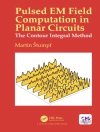Describes the major architectures, standards, and technologies of Passive Optical Networks (PONs)
The Com Soc Guide to Passive Optical Networks provides readers with a concise explanation of the key features of Passive Optical Networks (PONs); the different types of PON architectures and standards; key issues of PON devices, management, and implementation; and the promising business opportunities in access networks.
Written for a broad audience, ranging from developers to users, this indispensable book provides an understanding o the evolutionary path of PON access systems and their positioning with respect to the cable, copper, and wireless competitors for broadband access networks. In addition, The Com Soc Guide to Passive Optical Networks:
* Provides brief, high-level overviews of the architectures and applications of Fiber-to-the-Home (FTTH) or Fiber-to-the-Curb (FTTC) access networks and the alternative HFC, subscriber line, and Wi MAX access systems
* Awards readers with a clear understanding of what BPON, GPON, WDM-PON and EPON are and how they work, together with an introduction to their respective standards
* Carefully defines all acronyms and technical terms, making the book accessible to those who may not be specialists in this area
* Gives readers an appreciation of the last mile problems in telecommunications access networks, and the opportunities in optical-wireless integration
Table des matières
Preface xi
1 PON in the Access Picture 1
1.1 Why Passive Optical Network (PON) for the Last Mile Access?,
1
1.2 Services and Applications, 4
1.2.1 Displacement of Legacy High-Speed Access Services, 4
1.2.2 Internet Protocol (IP) over PON, 6
1.2.3 Triple Play and Quadruple Play, 6
1.2.4 Multimedia Conferencing and Shared Environments, 8
1.2.5 Backhaul Services, 8
1.2.6 Cloud-Based Services, 10
1.3 Legacy Access Technologies, 10
1.3.1 Hybrid Fiber-Coax (HFC) Cable Data System, 10
1.3.2 Digital Subscriber Line (DSL), 13
1.3.3 Broadband over Powerline (Bo PL), 15
1.3.4 Broadband Wireless Access (BWA), 16
1.4 Fiber-Optic Access Systems, 18
1.4.1 PON as a Preferred Optical Access Network, 20
1.5 PON Deployment and Evolution, 22
References, 24
2 PON Architecture and Components 27
2.1 Architectural Concepts and Alternatives, 27
2.1.1 Topologies, 27
2.1.2 Downstream and Upstream Requirements, 30
2.1.3 BPON, GPON, and EPON Systems, 30
2.1.4 Medium Access Techniques, 34
2.2 Passive and Active PON Components, 37
2.2.1 Passive Optical Coupler, 37
2.2.2 Splitter, 38
2.2.3 Arrayed Waveguide Grating (AWG), 40
2.2.4 Optical Line Termination (OLT), 41
2.2.5 ONU/ONT, 41
2.3 Management and Control Elements, 43
2.3.1 Bandwidth Allocation, 43
2.3.2 Quality of Service (Qo S), 44
2.3.3 Deployment and Maintenance, 46
2.3.4 Problems and Troubleshooting, 47
References, 50
3 Techniques and Standards 53
3.1 BPON Overview, 55
3.1.1 Basic Asynchronous Transfer Mode (ATM) Concepts, 56
3.2 The Full Service Access Network (FSAN) (ITU-T G.983) BPON
Standard, 58
3.2.1 Downstream Transmission, 62
3.2.2 Upstream Transmission, 64
3.2.3 Management Functions, 65
3.2.4 Wavelength Division Multiplexing (WDM), 65
3.2.5 Dynamic Bandwidth Allocation (DBA), 67
3.2.6 Protection Switching, 67
3.3 GPON, 68
3.3.1 GPON Encapsulation Method (GEM), 69
3.3.2 Downstream Transmission, 70
3.3.3 Upstream Transmission, 72
3.3.4 Ranging, 73
3.3.5 Security, 74
3.4 EPON, 74
3.4.1 EPON Switched Ethernet, 77
3.4.2 1000BASE-PX10, 1000BASE-PX20, and 10G EPON PMD Types,
78
3.4.3 Medium Access Control (MAC), 79
3.4.4 Comparison of 1G EPON and GPON, 83
3.4.5 Service Interoperability in EPON (SIEPON), 85
References, 86
4 Recent Advances and Looking to the Future 87
4.1 Interoperability, 87
4.1.1 Implementing 1:1 and 1:N Interoperability Testing, 89
4.1.2 Management and Quality-of-Service (Qo S) Challenges, 91
4.2 Wavelength Division Multiplexed PON (WDM-PON), 91
4.2.1 Coarse Wavelength Division Multiplexing (CWDM)-PON and
Dense Wavelength Division Multiplexing (DWDM)-PON, 93
4.2.2 WDM Devices, 95
4.3 Subcarrier PON, 97
4.4 Long-Reach PON, 100
4.5 Optical-Wireless Integration, 100
4.5.1 Architecture, 101
4.5.2 Integration Modes, Benefits, and Challenges, 103
4.5.3 Support of Next-Generation Cellular Mobile, 106
4.5.4 The Future of Optical-Wireless Integration, 107
4.6 Scaling Up PON to Much Higher Transmission Rates, 108
4.7 Conclusion, 111
References, 111
Appendix: Excerpts from the IEEE 10 Gbps EPON Standard
802.3av-2009 115
Index 183
A propos de l’auteur
Stephen Weinstein, Ph D, is an independent consultant (Communication Theory and Technology Consulting LLC) advising industrial clients and law firms. An IEEE Life Fellow, he invented the data-driven echo cancellation technique used in voiceband modems and pioneered the application of the Fast Fourier Transform to OFDM/DMT modulation.
Yuanqiu Luo, Ph D, is a staff engineer in the advanced technology department of Futurewei (Huawei) Technologies. She is a co-editor of ITU-T Recommendations G.987 and G.987.3 and a clause editor of IEEE Standard 802.1AS. A recipient of the IEEE Standards Award in 2011, Dr. Luo has authored more than forty publications.
Ting Wang, Ph D, is Department Head for NEC Laboratories America, Inc. Active in the IEEE Communications Society, Dr. Wang is Vice Chair of the Integrated Fiber & Wireless Technologies Committee, and is author of more than one hundred published papers.












